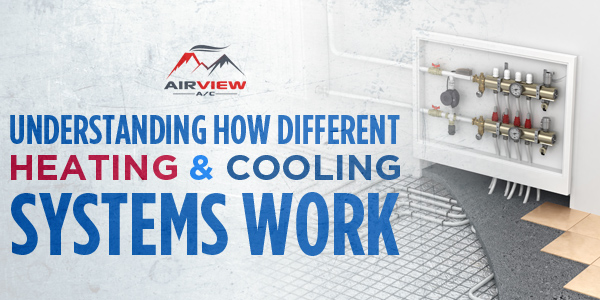Understanding How Different Heating & Cooling Systems Work

March 01, 2017
Knowing some industry jargon like SEER and EER isn’t enough regarding HVAC ownership. Understanding how different heating and cooling distribution systems work means half the battle. Read on to help you better understand your HVAC system better.
Forced Air Systems
Forced air systems rely on air as a heat transfer medium. These units depend on vents, plenums, and ductwork to distribute air and separate it from the heating and cooling system. In a forced air conditioning system, hot air is pushed through one set of air ducts and cold air is delivered through another, depending on whether you’re using your AC or your furnace. Blowout is the most common issue in a forced air system.
Gravity Systems
Gravity heating systems are based on the principle that hot air rises while cold air sinks. This means that gravity systems can’t be used along with your AC unit. When turned on, the gravity furnace, which is positioned in your basement, burns oil and gas to generate heat. The heat is then vented through the ductwork to your home’s top level to use the natural properties of gravity. This hot air escapes the vent as it travels up and distributes heat in your indoor space.
Radiant Systems
Radiant heating and cooling systems are unique from typical HVAC units because they cool or heat surfaces instead of air. The cool or warm air then releases heat into your home. Most commonly, radiant systems are used in heating implements such as radiators, which distribute heat throughout your room. Just like gravity systems, the main downside of radiant systems is that they cannot be used in conjunction with your AC.
Understanding how your HVAC system works goes a long way. Tap your local HVAC contractor in McKinney, Anna, Princeton, Van Alstyne, and more to learn about different heating and cooling systems.




